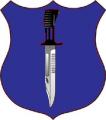Entropy,
I agree with your entire post, including the need for F-22, up until I get here:
The original post, if I recall correctly, had to do with the Air Force wearing out combat aircraft during a prolonged COIN campaign. I don't think you can rule out "cost" as an advantage. In fact, due to the lack of counter-air threat, and the prolonged nature of successful COIN efforts, "cost" which is a component of maintainability, is possibly the most important advantage an airframe can have.
The F-35 is too capable to waste on COIN. I know it sounds counter-intuitive, but a successful COIN effort needs to look hard at the bottom line, and satisfy the customer as cheaply as possible.Cliff,
I don't really agree with you here. The main driver toward multipurpose aircraft was to provide greater operational flexibility and to realize cost savings by reducing maintenance, logisitics and support costs through having to support fewer airframe types. That's a big reason driving the F-35, for example, an aircraft attempting to maximize commonality while still satisfying a diverse set of requirements from a diverse set of customers.
The kinds of aircraft that could do this, could, provided the institutions would let them, be funded completely, from the "pencil dust" that falls to the floor when signing the check from just one F-22 or F-35.
They're cheap, and more than capable enough. And they prevent Air Force officials from embarrassingly create asses of themselves in taudry theatrics, when maintenance and aging high-performance airframes start eating their budgets alive.Wilf,
Exactly, so what advantage does an OV-10 provide over an existing aircraft that justifies buying, operating and maintaining a fleet of them?



 There is probably a grain of truth to that, but there are also legitimate reasons, IMO, to increase the F-22 buy. One thing to keep in mind is that capping production at 183 aircraft and closing the line, the AF will probably want an F-22 follow-on sooner than might otherwise be the case
There is probably a grain of truth to that, but there are also legitimate reasons, IMO, to increase the F-22 buy. One thing to keep in mind is that capping production at 183 aircraft and closing the line, the AF will probably want an F-22 follow-on sooner than might otherwise be the case 









 "A Sherman can give you a very nice... edge."- Oddball,
"A Sherman can give you a very nice... edge."- Oddball, 
Bookmarks